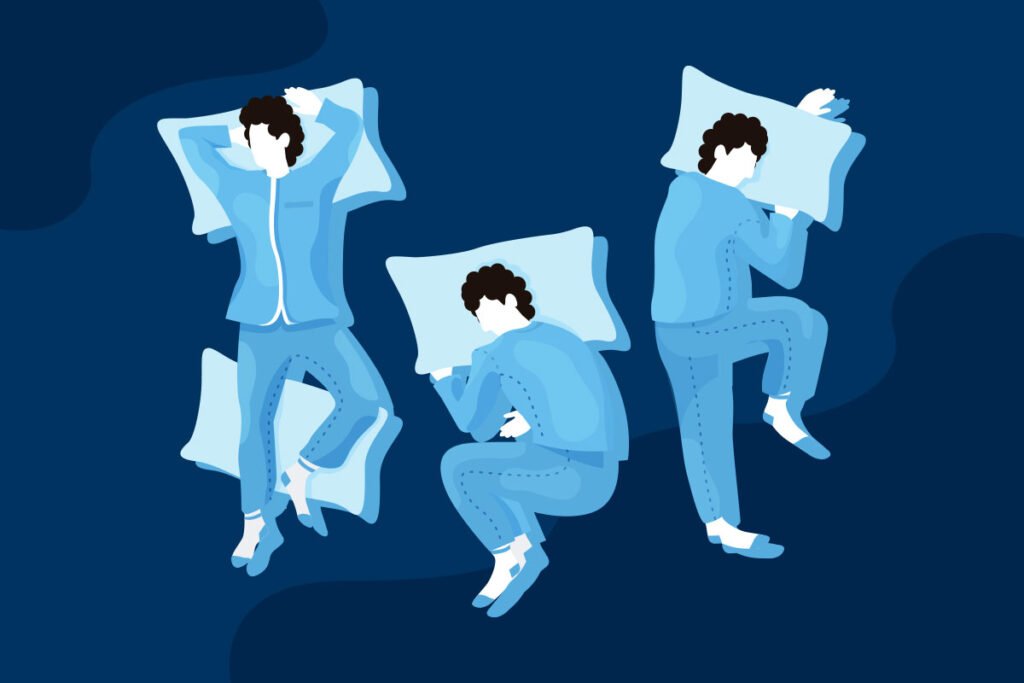
Does your sleep position affect your sleep quality? According to sleep experts, yes. There are pros and cons to different sleeping positions.
Pro: According to sleep expert and professor at Einstein College of Medicine, Shelby Harris, sleeping on your back is the healthiest option. Sleeping on your back is the best position for relieving body aches caused by sitting at a desk or in a car for a large portion of your day and, if your head is elevated, it rarely causes heartburn or acid reflux. Back sleeping is also considered the “beauty sleep” position, as your face remains free of pillow creases, which could lead to wrinkles later on in life
Con: The downside to sleeping on your back is obvious if you ask anyone who shares a bed with a back sleep who is also a snorer. This position often triggers the chainsaw chorus, causing the more silent sleeper to burrow their heads under the pillow. But science has made a great deal of progress by creating sleep wedges and other pillow solutions. So, eliminating the drawbacks to sleeping on your back may be a short and relatively inexpensive purchase away.
Pro: The good news for side sleepers is that scientists now believe it’s an excellent position to eliminate what neurologists call interstitial waste, which is considered a leading cause of neurological issues like Parkinson’s and Alzheimer’s.
But these benefits extend below the neck too. Sleeping on your side makes it easy for gravity to do its thing when it comes to bowel health. As long as you don’t curl up too tightly, sleeping in a relaxed foetal position can help clear intestinal waste while you sleep and ensure you leave the bathroom with a spring in your step.
Con: Be aware that this position may cause heartburn when the muscle in your oesophagus can relax, releasing the acid in your stomach, causing it to make its way to your mouth. Heartburn sufferers who sleep on their sides should try to sleep on their left-hand side as the symptoms are less severe since this muscle stays closed.
Selecting to fall asleep on your side may be the popular choice, but it can exacerbate neck and shoulder issues if you don’t have the proper support. Be sure to choose thick pillows to support your head and place a pillow between your knees to release the pressure on your lower back.
Also, since half your face spends significant portions of time on the pillow, you may want to consider investing in a silk or satin pillowcase – this can do wonders to minimise the extent of the pillow creases and help with your hair health.
Pro: This is an excellent position for snorers as it helps with breathing and can relieve sleep apnoea – excellent news for partners who appreciate a quiet night. However, tummy sleepers are the least common of all the sleep positions. Just 7% claim that this is their sleep style of choice. While this position can result in waking up with a stiff neck and numbness, careful selection of a flat pillow can go a long way to limit any post wake up discomfort.
During the Coronavirus pandemic, doctors have been recommending a modified tummy position (the prone position) for those stricken with the virus, as it does wonders for the lungs and helps keep the chest clear of excess fluids.
Con: Medical professionals urge tummy sleepers to select their pillows carefully, as this position can cause back pain – especially for those who carry their weight at the centre of their bodies, as it may add pressure to the spine.
If your mattress has seen better days, it may be time to research your replacement. After all, all the positions in the world won’t make much difference if your mattress can no longer offer you the support you need.
Some think that your sleeping position reveals your personality. Read more about that here.
For more fun sleep facts and expert sleep advice, why not visit our Sleep Blog?